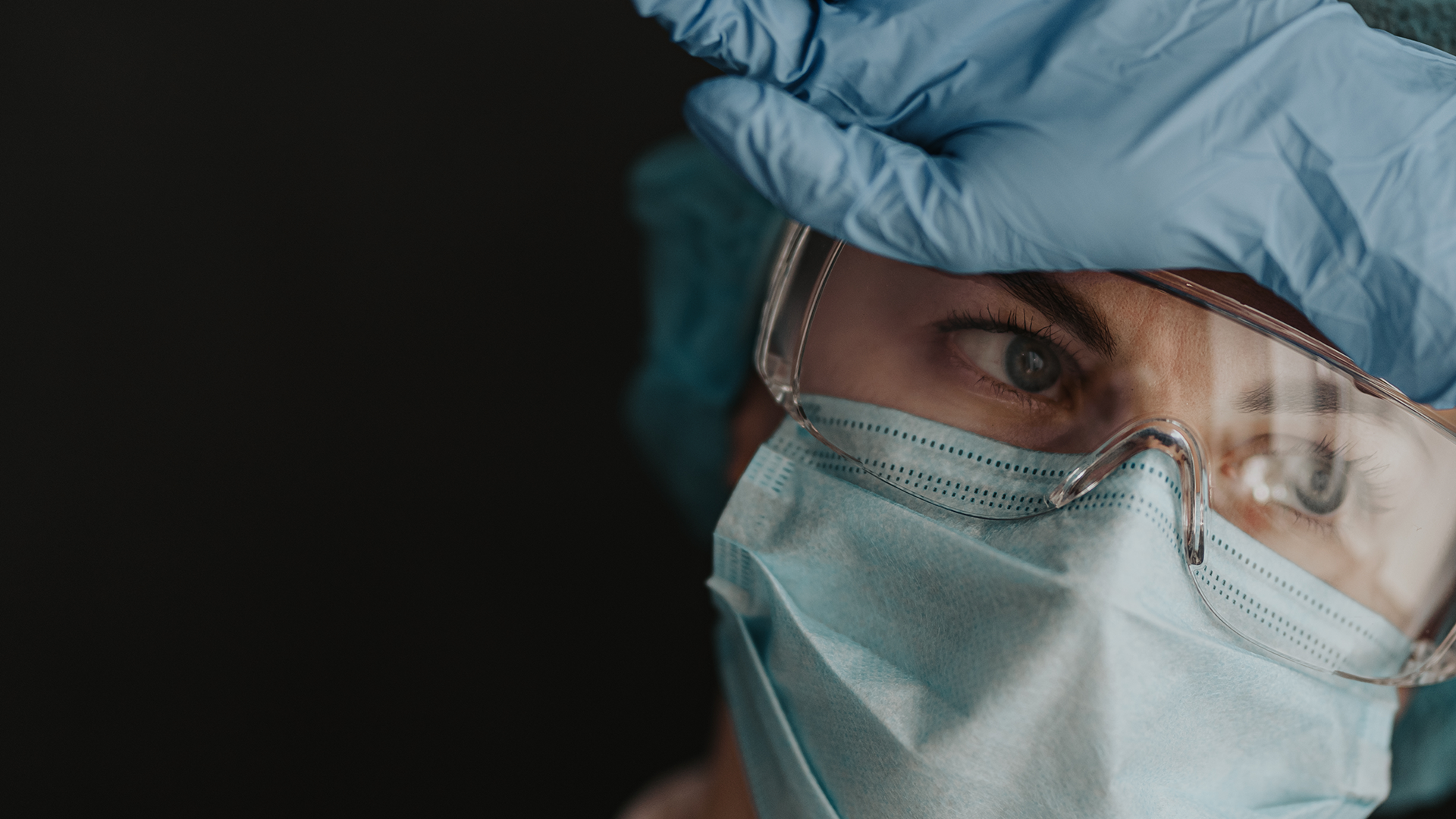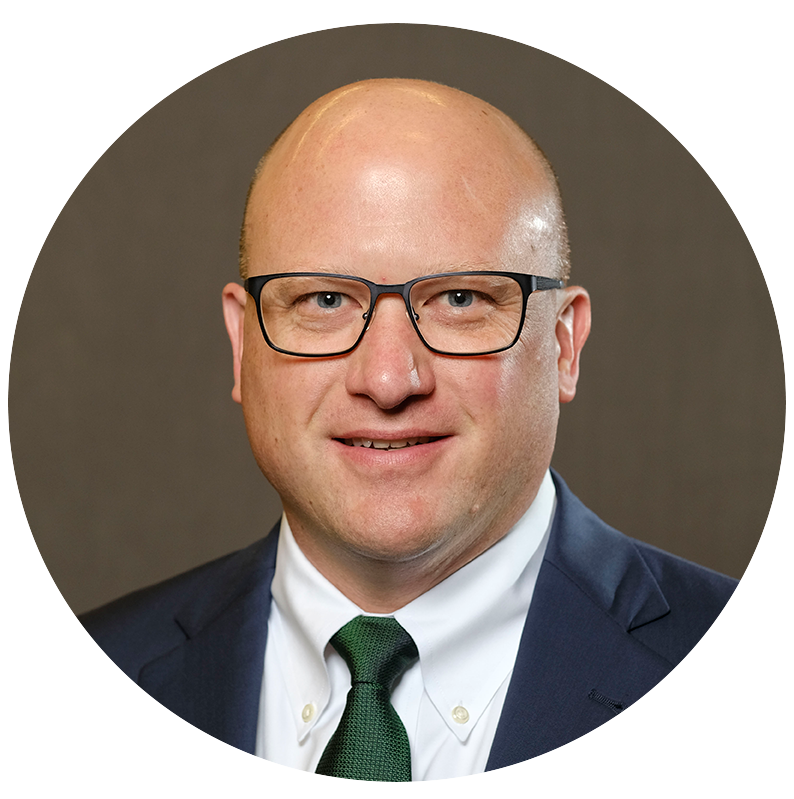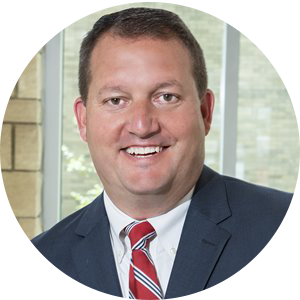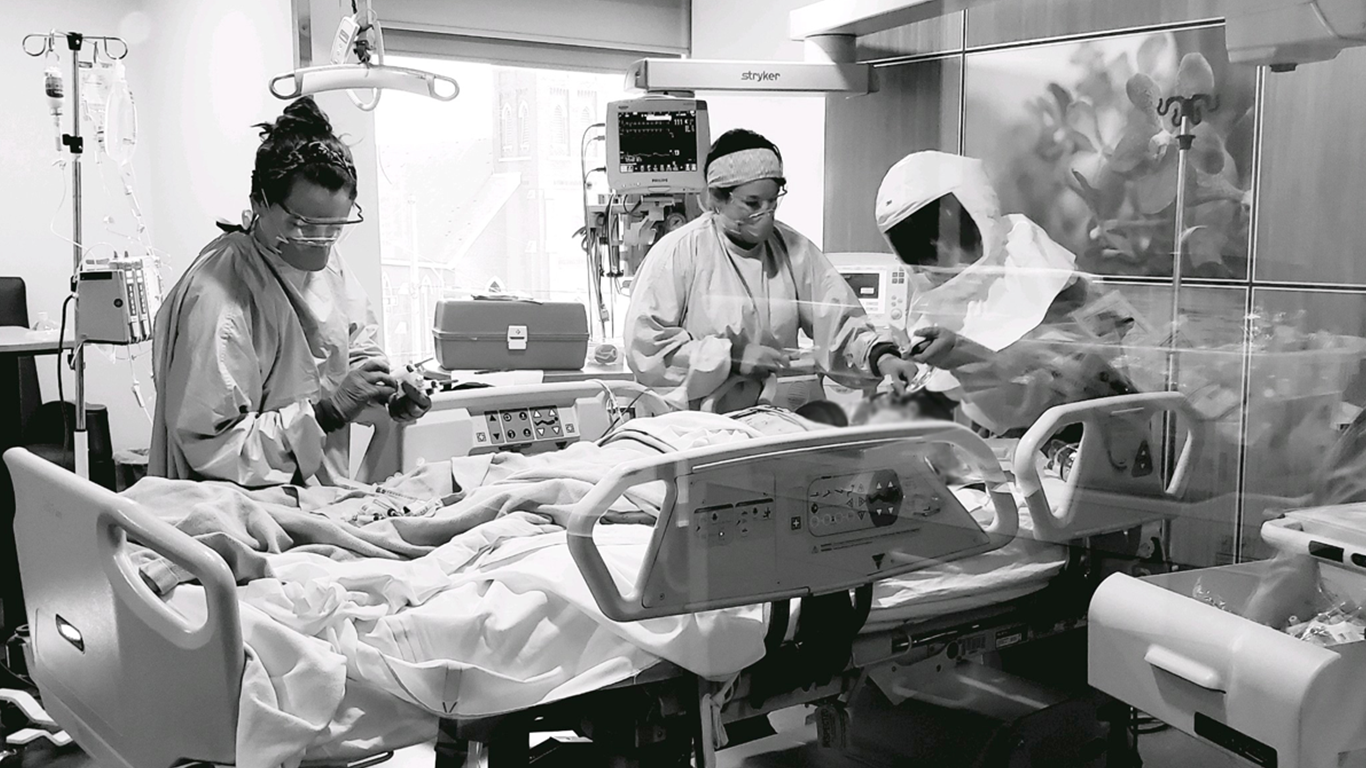 It was March 6, 2020, when Indiana had its first confirmed case of COVID-19. The Governor and other state health officials immediately addressed Hoosiers on the outbreak that was quickly making its way to Indiana. Little did everyone know, a multi-year marathon had just begun.
It was March 6, 2020, when Indiana had its first confirmed case of COVID-19. The Governor and other state health officials immediately addressed Hoosiers on the outbreak that was quickly making its way to Indiana. Little did everyone know, a multi-year marathon had just begun.
Health care employees immediately went to work treating thousands of confirmed cases, while still learning day-to-day about this new, quickly spreading the virus. In the beginning, one of the main tasks at hand was to expand intensive care units and gain access to more ventilators to treat those with severe cases.
 Dr. Scott Smith, CEO Adams Memorial Hospital
COVID-19 was a new virus that no one had seen before. Adams Memorial Hospital CEO Dr. Scott Smith reflects on the hospital’s first COVID-positive patient. Dr. Smith was the administrator on call the night that his 25-bed, rural hospital received the second confirmed case of COVID-19 to require admission in the state of Indiana. Dr. Smith says the patient entered the hospital in the early hours of March 9, 2020. An Emergency Operations meeting was quickly called, and the Indiana Department of Health (IDOH) was notified.
Dr. Scott Smith, CEO Adams Memorial Hospital
COVID-19 was a new virus that no one had seen before. Adams Memorial Hospital CEO Dr. Scott Smith reflects on the hospital’s first COVID-positive patient. Dr. Smith was the administrator on call the night that his 25-bed, rural hospital received the second confirmed case of COVID-19 to require admission in the state of Indiana. Dr. Smith says the patient entered the hospital in the early hours of March 9, 2020. An Emergency Operations meeting was quickly called, and the Indiana Department of Health (IDOH) was notified.
Having worked at the hospital for 20 years, Dr. Smith had just taken over as CEO two months earlier and had just earned his MBA from The Kelley School of Business Physician MBA Program. He says the leadership communication skills he learned from the program were useful from the start and only grew in importance as the pandemic evolved over the next five weeks.
“In the early days, all we had to offer was supportive care,” Dr. Smith says. “We didn’t know how many more patients would be coming in or what to expect in the months ahead.” As more cases came in, Dr. Smith recalls having to prepare his team for a marathon instead of the sprint when it came to caring for patients.
“When there is a natural disaster that strikes, such as a tornado, there is always outside help to mitigate the issue,” Dr. Smith said. “It became clear early on that help wasn’t coming, and we had to figure this out on our own.”
Dr. Smith quickly became active in educating state and federal policymakers on what was happening on the frontlines and took a leadership role with IHA, chairing the association’s COVID-19 testing workgroup.
“I quickly learned the importance of being connected and communicating as much as possible during this time,” said Dr. Smith.
Then vs. Now
Fast forward to the summer of 2021. Indiana’s hospitals and frontline workers have done a fantastic job treating, testing, and vaccinating Hoosiers. More than 2.8 million Hoosiers are fully vaccinated, and hospital ICU capacity is near normal levels. From the beginning of the outbreak until now, hospital employees have worked tirelessly to treat and adapt to an ever-changing virus that took the lives of more than 13,000 Indiana residents.
 Dr. Eric Fish, CEO Schneck Medical Center
Dr. Eric Fish, CEO Schneck Medical Center
Dr. Eric Fish, CEO of Schneck Medical Center, is doing his part to put more vaccines in arms.
“To make it easier for more residents to get vaccinated, Schneck providers are now going on-site to vaccinate employees who are interested in becoming
vaccinated,” he said.
“The key is to remove all barriers for everyone. We have been working closely with county health departments to assist them throughout the pandemic because they don’t have the manpower to do it alone.”
Dr. Fish says the next step is to work with school systems to make it easier for parents as well.
Schneck is also working to help educate the Guatemalan and Hispanic community to get those who are interested vaccinated as well.
“If an organization wants to bring us in to vaccinate interested employees, we will come on-site even for just one person,” Dr. Fish said. “I encourage everyone to do their research on this safe and effective vaccine in order to return to normalcy.”
Dr. Fish says the silver lining in a tragic, difficult year has been the coordination between hospitals and the lessons learned.

“The bright spot is our resiliency,” Dr. Fish said. “Our hospitals, the Indiana Hospital Association, the Indiana Department of Health, and many other organizations worked together to get us through. A lot of states do not have this type of support. We worked in unity and must continue working together to keep our great state safe.”
Although we are not completely out of the woods yet and the impact of new variants is unknown, healthcare leaders are making progress and learning more every day to successfully combat the virus.
Brian Tabor, president of the Indiana Hospital Association, says he’s proud of the leadership role hospitals have taken throughout the pandemic.
“COVID-19 is not likely going away completely, and there could be similar challenges over the horizon,” Tabor said. “However, Indiana’s hospitals again proved that they are up to the task of navigating our state through major health crises.”
